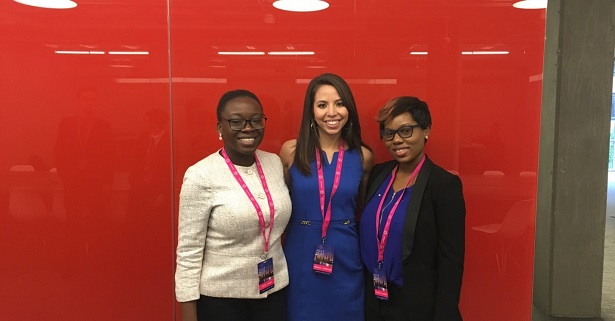
Minh Tuyet Bui, 2013-2015, Vietnam (center), performs her dance “Dreamer’s Café” with Heidi Stonier and Bryan Wilson at the Center for Modern Dance Education, New Jersey.
My dance/movement journey started in 2010 when I read the book Dance as a Healing Art by Anna Halprin. To this day, I am grateful for her spirit and wisdom. It empowered me to cross the ocean on a Fulbright grant to become a Dance/Movement Therapy (DMT) student in the United States at Sarah Lawrence College.
After 10 years of experience in education, I have observed that the teaching methods currently in use in Vietnam cause students to suffer. Students are rarely encouraged to observe, ask questions or think critically in order to make their own decisions. In an ideal environment, students must learn inner leadership, personal responsibility, and self-discovery. They should add value to the world by playing a part in it. In this respect, traditional education is failing.
By experiencing my own body through movement and applying this experience in teaching, I see how creative movement empowers students to develop personality and strengthen their inner leadership. In one of my classes, “Movement with Nature,” I guided children to make physical contact and engage all the senses with a tree. Students pay attention to feelings, emotions and images stimulated by their contact with the tree, then are asked to dance with the tree and find their relationship to it. The tree is in you and you are in the tree. After that, they draw the tree and write about their experience. Children identify with nature by projecting themselves into the form of a tree through movement. From this process, they can obtain rich insights and meaningful connections to their life needs. One shy girl shared, “My tree is scared to sleep alone.” Another said, “My tree doesn’t like being hit.” Another child saw the trees as endless, a home that offered strength and safety. “I am here if you need help” her tree said.
Dance-movement engages all creativity and awakens our whole being– body, spirit, mind, emotions and senses. I believe that dance-movement as a healing art is an effective tool to empower students in Vietnam. It results in personal transformation. My overall goal is to improve living conditions through holistic education. In the short term, I expect to apply Dance Therapy creatively to issues of contemporary Vietnam; I hope to broaden my work with victims of Agent Orange, domestic violence, abusive drug use or survivors of human trafficking. The children of these difficult circumstances then have the opportunity to reconnect with themselves and the community and with the new trust become the masters of their life. My long term plan is to create a dance therapy school in Vietnam and to develop training programs for teachers and education managers in higher levels of education.
However, I did not have a dance background. Unknowingly, I often found myself leaving out the word “dance” when speaking about Dance/Movement Therapy. “I do not have a dance background at all” or “My body is now too ugly, too old and too stiff for dance” or “I was born in a family that believes dance is luxurious” are some of the excuses I would say to myself. So what leads an educator who has no dance technique to be passionate about a Dance/Movement Therapy program? I believe that compassion is a resource to help me live with my vulnerability and forgive myself, forgive all failure of nerve, timing and initiative. The urge to work on the body comes from an instinct to discover the unknown, to find what is buried in my body, to strengthen my inner sense, body, self-esteem, ego, and imagination to move to self-realization. I know my body has a pure desire to move and dance and to be with my spirit.
Contact Improvisation, a dance technique where points of contact become starting points for exploration, defines my personality and dance journey. Although it is not feasible to apply Contact Improvisation directly to Dance/ Movement Therapy sessions, its essences – Connection, Attunment and Development – are relevant to Dance/Movement Therapy goals. I am able to apply Contact Improvisation’s essential concepts to my clients (children with autism and the elderly with dementia) as a Dance Therapy intern. They are my great teachers. They teach me to love and honor my body, to be present, to improvise, and to connect to others and myself in a therapeutic way.


No Comments